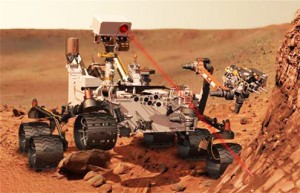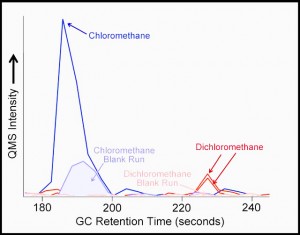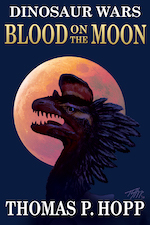 To a story writer like me, the latest discoveries of the Mars rover Curiosity suggest a plot for an interplanetary murder mystery. And while I might prefer to set the mystery in a small cramped space outpost like I did for my moon-base mystery The Treasure of Purgatory Crater, there may be some very real and scientifically valid murders to investigate. Let me explain.
To a story writer like me, the latest discoveries of the Mars rover Curiosity suggest a plot for an interplanetary murder mystery. And while I might prefer to set the mystery in a small cramped space outpost like I did for my moon-base mystery The Treasure of Purgatory Crater, there may be some very real and scientifically valid murders to investigate. Let me explain.
Curiosity, NASA’s latest Mars exploration vehicle, has turned up the second bit of evidence that some pretty toxic substances exist in the soils of Mars. Chlorides. And I don’t mean those innocuous and appetizing chlorides found in table salt, namely sodium chloride. I’m talking about a bunch of much more sinister chlorides.
For instance, how does methylene chloride sound? Appetizing? I hope not, or you might fall victim to the type of poisoning I’m thinking of.
 Here on earth, if some methylene chloride were to be spilled on the ground, you would see a team of specialists in those “Hazmat” moon suits out there cleaning it up. I’ve worked with it in the lab and I can tell you it is not a substance to be trifled with. A little whiff can cause wooziness. Prolonged exposure can lead to coma and death. Long-term contamination with small amounts can lead to cancer.
Here on earth, if some methylene chloride were to be spilled on the ground, you would see a team of specialists in those “Hazmat” moon suits out there cleaning it up. I’ve worked with it in the lab and I can tell you it is not a substance to be trifled with. A little whiff can cause wooziness. Prolonged exposure can lead to coma and death. Long-term contamination with small amounts can lead to cancer.
There. Are you suitably impressed by methylene chloride’s potential for nastiness? So, have a look at the data plot radioed back from Mars by the rover. It would seem that methylene chloride (labeled Dichloromethane) permeates the soil, at least in the spot the rover has been investigating. Oh, and I’ve neglected to mention an even larger contamination with methylene chloride’s cousin, chloromethane. Trust me, it’s nasty stuff too, as are the two other members of this family of carbon-chlorine compounds, carbon tetrachloride and that old nemesis of the murder-mystery genre, chloroform, which goes by the scientific name of trichloromethane.
Now, all this could be chalked up to a chance occurrence of contamination at one test site on Mars, except for one thing. Or two or three things, actually. Other rovers and landers have also turned up evidence of nasty chlorinated compounds, so a trend is developing. Elsewhere on Mars the toxic substance perchloric acid has been detected more than once. It’s a corrosive, burning, chemically reactive substance that is inimical to life.
So as you can see, the Martian soil contains many a compound that could be used to do in your victim if you should want to commit murder on the Red Planet. I’ve already got a science fiction mystery manuscript about such matters under construction, so you can expect to see more on the subject soon.
Meanwhile consider this: setting homicide aside for the moment, how about bactericide? Perhaps we are looking at the answer to a mystery that has puzzled scientists for decades. Why have our space probes never detected signs of microbial life on Mars, even though its environment is at least marginally suited for bacterial or algal growth?
It has long been speculated that bacteria might be able to cross the void of space from one planet to another by riding on meteoritic rocks thrown out from a planet by asteroid impacts, which then land on another planet bearing their tiny microbial colonists. But evidence of such colonization has never been found despite years of searching. Now the answer may be in, and it’s a case of MURDER.
Imagine a meteor ferrying microbes from Earth to Mars, smashing on impact and spreading a puff of bug-containing dust on the ground. The rovers have reported some reasonably good environments in times past where the microbes could have flourished. But they didn’t. Why not? Could it be that methylene chloride, perchloric acid, and chloroform have done their villainous deed and poisoned the newcomers before they could get a start?
I for one, as a mystery writer, think that it’s likely we’ve got our answer. Elementary my dear Watson: it was the chlorides!







